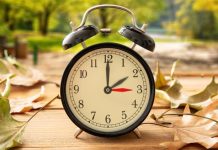[ad_1]
Does [a:] as in ‘baa’ sound more green or more red? And is [i:] as in ‘beet’ light or dark in colour? Even though we perceive speech and colour are perceived with different sensory organs, nearly everyone has an idea about what colours and vowels fit with each other. And a large number of us have a particular system for doing so. This is shown in research by linguists from Radboud University and the University of Edinburgh on similarities in the vowel-colour associations perceived by over 1,000 people.
For the writer Vladimir Nabokov, “aa” was the colour of polished ebony and “ee” was yellow. Nabokov had synaesthesia: his sensory perceptions mingled with one another. In his case, he saw colours when hearing certain vowels, but many forms of synaesthesia are possible. Only 1 in 25 people have synaesthesia, but this new research shows that certain intuitions about “sound colours” shared by many more people than this.
“Aa” is more red than green
In this study, over 1,000 people took part in an online test where they chose colours for 16 spoken vowels. A large majority felt that “aa” was more red than green, and “ee” more light than dark, whether they had synaesthesia or not. According to Mark Dingemanse, one of the researchers, “There seems to be a logic to how we link sound and colour, and the structure of language has an important role in this process.”
Vowel space
Sixteen vowels sounds like a lot, but it works like this. When you say “aa,” then move to “oo” as in boot and then to “ee” as in beet, Dingemanse explains, you have visited the three outer points of what linguists call the vowel space. The 16 spoken sounds in our study were evenly distributed over this space.
Vowel system dictates colour associations
Earlier studies have found that colour associations are linked to the pitch of the sounds: the higher the pitch, the lighter the colour. But the new study shows that colour associations are driven to a greater degree by the vowel system of a language. For example, many participants described sounds that were close to the Dutch vowel “ee” as light green, while nearby sounds resembling “ay” as in say were assigned a different colour. The associations are shaped according to how our language carves up the vowel space.
Dingemanse says, “If colour associations were purely dependent on acoustical factors, the colours would neatly run into one another like in a rainbow. Instead, we see that sounds are grouped according to the way that our language carves up the vowel space: a few blue spots and then suddenly a red one, with no transition of blue-purple-red. You could say that the vowels have to pass through the sorting machine that is our language before we can link colours to them, even in synaesthetes, for whom associations like these are involuntary.”
Synaesthesia
The researchers used a new method to dig deeper into the structure of the colour associations. For each participant, they compared the chosen vowel-colour associations with a random sample of 10,000 random associations. They used this to measure how systematic the chosen associations were.
“Synaesthetes’ associations were more systematic than those of non-synaesthetes,” says Christine Cuskley of Edinburgh University. “But some patterns occur everywhere: people seem to align the vowel space and colour space with each other and connect the dots from one space to the other.” For instance, colours chosen for “ee” and “ay” tend to be quite close to each other, while those for “aa” and “oo” are further apart. Automatic associations like those of synaesthetes therefore rely on some of the same principles that non-synaesthetes use to link vowels and colours.
The study took place as part of the so-called Great National Research Project (GNO), a collaborative venture of Radboud University, the Netherlands Organisation for Scientific Research (NWO) and NTR Broadcasting. In order to better understand the way in which our senses work together, it is necessary to examine a large number of subjects who represent all degrees of synaesthesia, from less to more. This was made possible by the GNO, which was set up by Dingemanse and neurobiologist Tessa van Leeuwen of the Donders Institute in Nijmegen. With the support of the NWO, they developed software for performing quick online tests. The researchers made the software publicly available so that others could continue to work with it. Future publications can thus share additional new insights into how synaesthesia works and how language influences our perception.
Story Source:
Materials provided by Radboud University Nijmegen. Note: Content may be edited for style and length.
[ad_2]















